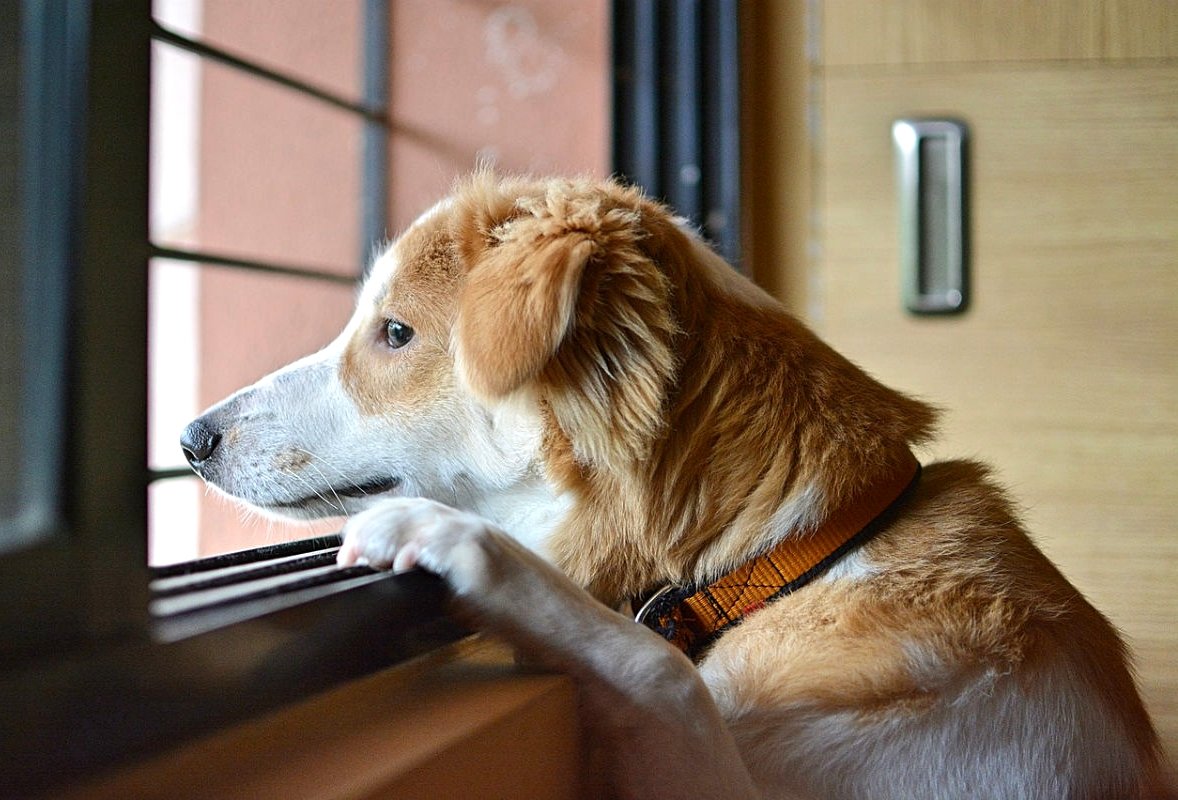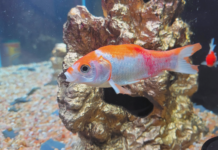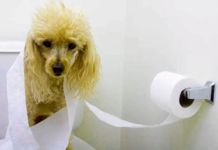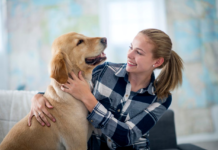Separation anxiety is a well-known psychological condition that affects many pet dogs. The signs can appear in a variety of ways, from excessive barking and destructive behaviour to drooling and pacing. Fortunately, there are many things you can do to help your pet overcome separation anxiety. In this article, we will look at five strategies for reducing your dog’s anxiety and making them feel more at ease when you’re not at home.
Read More: Common Injuries in Dogs: How to Treat Them
Contents
- 1 Understanding separation anxiety in Dogs
- 2 Causes of separation anxiety in Dogs
- 3 Gradual desensitisation
- 4 Leaving your scent in the house
- 5 Getting a pet sitter
- 6 Providing plenty of distractions
- 7 Addressing separation anxiety through training
- 8 Common mistakes to avoid when addressing separation anxiety in dogs
- 9 Conclusion
Understanding separation anxiety in Dogs
Separation anxiety occurs when your pet dog is separated from its owner and experiences fear and stress as a result of being alone. It may be more prevalent in dogs with existing mental health problems, and it can even result in self-harm and other destructive behaviours such as chewing furniture and equipment as well as urinating and pooping in the house. Pet owners should be aware that separation anxiety cannot be corrected through punishment or negative reinforcement, as it requires proper understanding and a more comprehensive approach to overcoming this behavioural issue, which can include training, behaviour modification and managing expectations.
Causes of separation anxiety in Dogs

Separation anxiety can be caused by a variety of factors. Some dogs may be genetically predisposed to separation anxiety, which means that they are more likely to develop this condition regardless of their environment or experiences. Traumatic experiences, such as abuse or neglect by previous pet owners, are also common reasons that may lead to this behaviour in dogs. Other causes can include a lack of socialisation and changes in your pet’s routine or environment, such as moving to a new house or losing a companion. In some circumstances, it might also be a result of the pet’s unhealthy attachment to its owner, which can cause excessive dependence and anxiety even if separated for a short period of time.
Below are 5 ways to help your dog overcome separation anxiety:
Gradual desensitisation
Gradual desensitisation involves exposing your pet to situations that trigger its anxiety, but in a controlled and gradual manner. This can help your dog develop coping mechanisms and reduce its anxiety over time. For this, you’ll need to start by leaving your pet alone for short periods and gradually increasing the duration over time. It’s a good idea to pay attention to cues and make sure that your dog is calm and relaxed before you leave. You can also use treats and toys to make the experience more positive and rewarding.
Leaving your scent in the house
Leaving a scent is another effective way to comfort your dog when you’re not around. Dogs have a powerful sense of smell, so a familiar scent can provide them with a sense of security and comfort. You can put your clothing or a blanket with your scent on it in your dog’s bed or crate, which may help your dog feel more relaxed and comfortable when you’re not around. You can also experiment with leaving calming diffusers around the house to help soothe and calm your dog while you’re gone.
Getting a pet sitter
Consider hiring a pet sitter to look after your dog if you’re going on vacation or for an extended period of time. A pet sitter can provide your pet with companionship and attention while you’re away, which can help reduce its anxiety and stress. They can also help maintain your dog’s routine and provide it with the exercise and playtime it needs to stay healthy and happy.
Providing plenty of distractions
You can also try providing plenty of distractions for your dog to keep it occupied and reduce its anxiety when you’re not around. Toys, puzzles and treats can all be effective distractions that can help keep your pet busy and take its mind off its anxiety. Before you leave, give your dog a puzzle toy filled with his or her favourite treats, or leave a few toys around the house to keep it occupied. You can also leave the TV or radio on in the living room, which can provide some comforting background noise and help mask any outside distractions.
Addressing separation anxiety through training
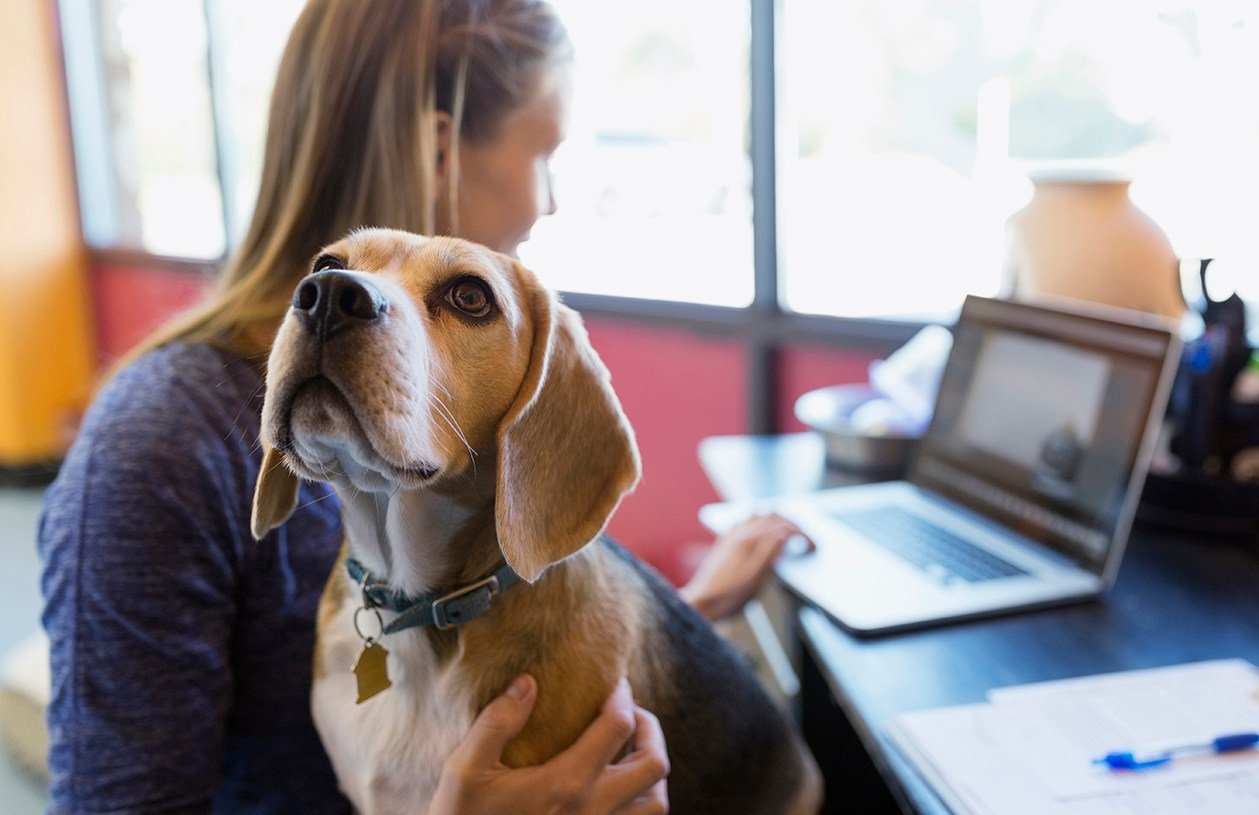
If all else fails, training with the help of a professional can be one of the most beneficial aspects of addressing separation anxiety in dogs. Through training, you can teach your pet to develop coping mechanisms and reduce its anxiety over time. It’s important to start with basic obedience training, such as sit, stay, and come, to establish a positive relationship and build confidence. Once your pet is comfortable with following basic commands, you can then move on to more advanced training, such as desensitisation and counterconditioning, to help your dog overcome separation anxiety and develop positive associations with being left alone.
Read More: 10 Best Pet Care Tips for Dogs in 2023
Common mistakes to avoid when addressing separation anxiety in dogs
When dealing with separation anxiety in dogs, there are some approaches that work effectively, such as gradual desensitisation and personalised training, and some that should be totally avoided. Here are some of them:
- Punishing your dog for its behaviour can be counterproductive and make anxiety worse. Instead, you should focus on positive reinforcement and reward your dog for desirable behaviour.
- Another mistake many pet owners make is leaving their dogs alone for extended periods of time or unexpectedly. This can be especially stressful for dogs.
- Avoid making a big deal about leaving or returning. This can reinforce your dog’s anxiety and make it more difficult for it to cope when you’re not around.
Conclusion
Separation anxiety can be a challenging issue to deal with, but it is not impossible to overcome. With the tips in this article, you can provide your pet with more comfort and security while you’re away from them. Getting dog insurance is also a good idea if your pet suffers from mental health problems or any pre-existing medical conditions, since it can provide you with financial security and better peace of mind. Remember, pets with separation anxiety issues are not alone, and they can learn to cope and thrive with patience, love, and proper care.

